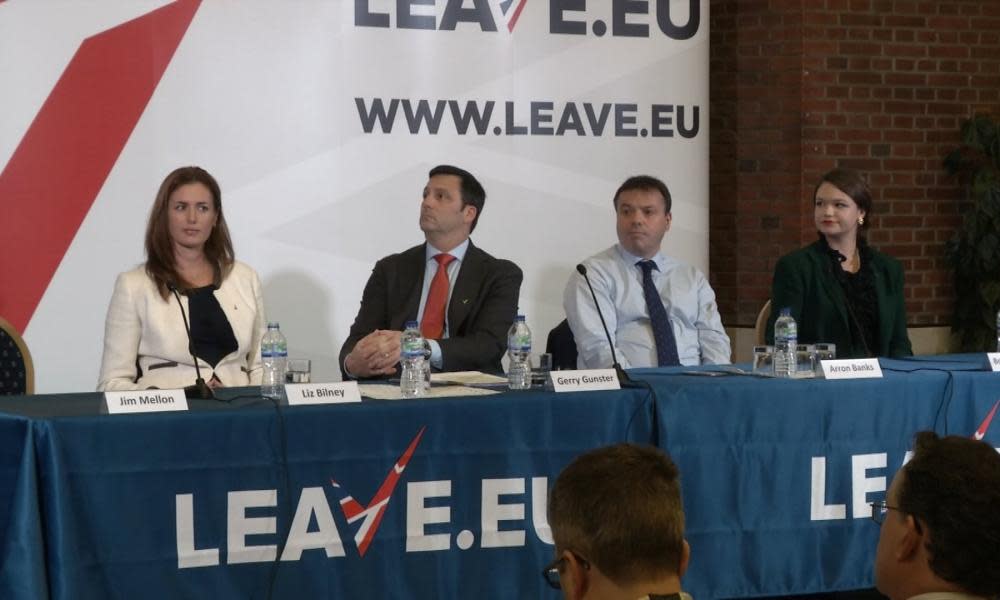Keep your enemies close: the splits and infighting behind the Leave campaigns

Acrimony, distrust and recrimination have ravaged the battle over Brexit since the summer of 2016. Yet in the run-up to the EU referendum, the same toxic atmosphere characterised the relationship between some of the groups campaigning to secure Britain’s EU exit.
Vote Leave. Leave.EU. Grassroots Out. Labour Leave. BeLeave. There was seemingly a pro-Brexit group for every occasion. The constant warring meant that they often appeared to be engaged in comic levels of factual infighting worthy of a Monty Python sketch. Leaving the EU was about the only thing they could agree on, but some now credit the fact that the groups were aiming at different groups of voters with helping to secure the shock result.
The two main groups were Vote Leave, which eventually went on to win the support of the Brexiters in David Cameron’s cabinet, and Leave.EU, backed by prominent Ukip figures. The former was headed by lobbyist Matthew Elliott and Michael Gove’s former special adviser Dominic Cummings. The latter was bankrolled by Ukip donor Arron Banks.
There was no love lost between the groups. At one point, Banks said that Elliott and Cummings were “two of the nastiest individuals I have ever had the misfortune to meet” and that he “wouldn’t put them in charge of the local sweet shop”.
The increasingly bitter dispute was not just down to the big personalities involved. There was also a major prize at stake – the race to become the official “Leave” campaign group. The winner would gain greater spending powers and media time. Official organisations were granted up to £600,000, campaign broadcasts and free mailing. They were also allowed to spend up to £7m, instead of the £700,000 limit that applied to other registered campaign groups in the run-up to the referendum.
The acrimony caused splits within political parties. While Nigel Farage was an early backer of Leave.EU, Ukip’s only MP at the time, Douglas Carswell, backed Vote Leave. There were even reports of staff in Vote Leave headquarters shredding documents for fear that they were being spied upon by their pro-Brexit rivals. Banks has gone on record that he ordered a private detective to follow Elliott.
The strategic differences were clear. Vote Leave initially wanted to run an economy-focused campaign capable of winning over those considering voting for Brexit, but concerned about the consequences. The group soon identified that its most successful message was the pledge to use money currently sent to Brussels to fund the NHS. Meanwhile, Leave.EU would release starker, more rightwing messages designed to appeal to Ukip voters and ensure that staunch Leavers cast their vote. Immigration was their key battleground.
There was also internal strife at Vote Leave. Some Labour and Green supporters left the group, denting its cross-party credentials. The Labour Leave group was at one time a supporter of Vote Leave, but leading members eventually broke away to campaign independently.
With the infighting at its peak, some figures – including Farage and some Tory MPs – eventually threw their weight behind another organisation, Grassroots Out. The group’s garish green ties became a feature in the Commons. One of its rallies saw the unlikely speaking lineup of Farage, Labour MP Kate Hoey and former Respect MP George Galloway. As the referendum progressed, Leave.EU threw its weight behind the grassroots movement in a failed attempt to become the official pro-Brexit campaign. And if all that wasn’t confusing enough, there was also BeLeave.,
Now the confusion that characterised the campaign groups has resurfaced, and questions are being asked about the precise nature of the relationship between them – and how they used the funds they received.

 Yahoo News
Yahoo News 
